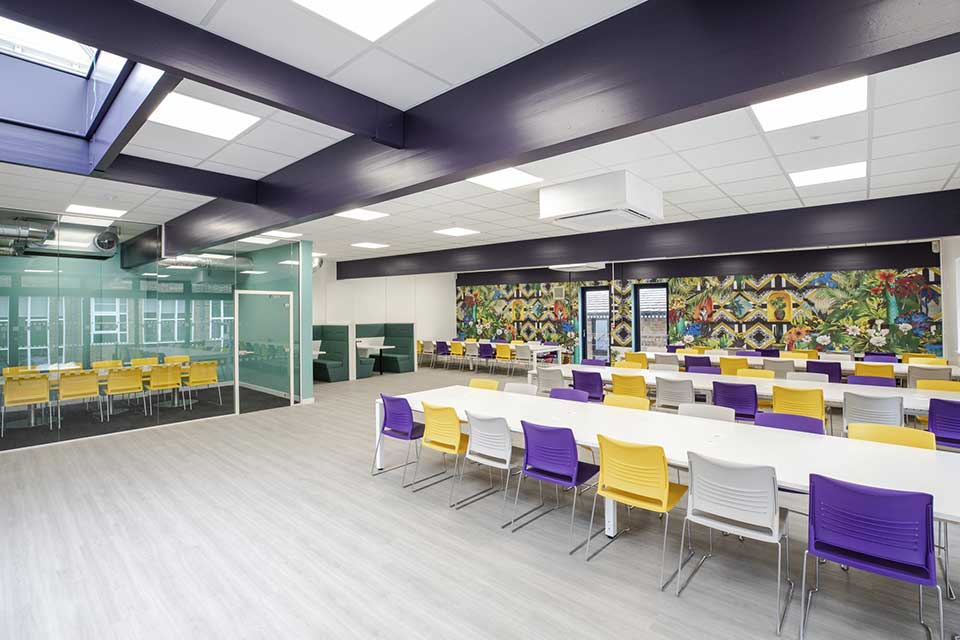Managing Energy This Coming Winter

https://youtu.be/Xy4tgAFNbSMHow are schools going to manage to heat their learning environments, light their learning environments, and above all else – keep everybody healthy, safe, and warm this coming winter?It’s a question that will be running through the minds of most bursars and senior leaders.
What is the obvious answer to future proofing our schools?
The first answer, if one was sitting in a regular school meeting room, would be to do things like reducing the temperature by a couple of degrees, or having windows open, that makes things safe. Another example would be to make sure lights are turned off. These simple little things are going to have an impact.
However, having worked with the Noble + Eaton team, considering a move to modular buildings should be something that’s at the top of everybody’s agenda. Thinking about the other spaces available, and making the most of different spaces rather than just trying to adjust the existing spaces. This is not to suggest that teaching should be done in static caravans and tents because modular buildings have evolved significantly since the fifties, sixties and seventies.
The essence is to adopt a two pronged approach. Taking measures to reduce energy costs can’t be the only part of the answer. This second part of the solution is investing in sustainable self-heating and self-maintaining buildings equipped with solar panels and an integrated and designed interior which can be placed or moved as needed, and effectively refurbish the footprint.
These buildings offer two huge energy advantages:
- It’s very easy to heat these buildings because they have an energy quotient.
- They will very likely have a future-proofed energy source such as solar or a ground source heat energy system.
Importantly, and in addition to the energy saving advantages, these modular buildings can be purposely designed in endless numbers of shapes and sizes. They will be energy efficient, blend perfectly with the school grounds, and also specifically designed for the type learning that would take place.
Changing to modular buildings can be an easier and more sustainable option compared to working with the traditional classroom buildings that most independent schools are housed in. The beautiful and inspiring, historic learning spaces can then be repurposed for numerous other activities including outreach and community networks. This provides a further development opportunity to redesign the way in which school buildings are used.
It is important to take a step back, define strategic priorities around energy concerns, saving costs and ensuring spaces are being used as effectively as possible – whilst making sure that it is sustainable for the future as well.
In terms of their legacy, many schools won’t be able to afford to heat their learning spaces this winter. In addition, in five to ten years when the price of fossil fuels has increased disproportionately as it is set to do, schools will be even less able to heat their spaces. It is clear that government has to intervene now, by either repurposing existing learning spaces, or turning them into sustainable modular spaces.
The great advantage of modular buildings is that they can be designed to exact specifications by a design team.
From choosing window placement, furniture, optical flow and lighting requirements, these purpose-built buildings are at once sustainable and also address specific educational outcomes at the same time – why wouldn’t you choose to do this?
It‘s also going to have an impact on the behaviour of the students, because this designing process can engage all stakeholders, including parents and school children in this journey. As with the experience of remote learning over the past few years, the way in which students learn now has completely changed. What they are seeking from educators has actually shifted, making use of different opportunities and increasingly using technology to enhance learning. These modular buildings can have this technology embedded within the structure right from the start, as part of the building, and part of the learning journey from the get-go.
Other spaces should be considered as well, not just the classrooms. There are the corridors, spaces where there could have been poor behaviour or that might have been too small to accommodate the flow of pupils, or too big and unused. Every single space can be rethought – and these modular buildings can provide different schooling solutions, while being truly inspiring. On top of that, modular buildings can be aesthetically pleasing at the same time.
Aesthetics are a very important concept in this regard, because when a space isn’t fulfilling a particular function, it needs to be pleasing to the eye.
Take for example the pastime of restoring and rebuilding classic cars. They’re exceptionally pleasing to the eye, but they are not especially functional, and no collector uses their classics on a day-to-day basis. They’re too expensive to run and super-unleaded fuel simply costs too much money. Extending that thinking to school buildings, should legacy buildings that are a hundred and fifty years old for modern education? Of course not – they should either be treated as museums, or be removed and replaced with alternatives that are fit for their purpose and function-specific. Failing that, all that is accomplished is that they contribute to global warming, over-carbonising the atmosphere and in the process making education too expensive due to impossible heating requirements.
Ultimately, it would be ideal if these historic schools are placed on the pedestal they deserve. They could be the most amazing conference areas, or spaces to display the students’ work. It is important to rethink how we use those spaces, so that they are not being abandoned or completely replaced, because it is recognised that their history needs to be celebrated, a lot of hearts and minds are actually woven into these beautiful schools. That means that they shouldn’t simply be bulldozed and gotten rid of, but that their beauty is highlighted and celebrated – but in a different way.
It’s been proven that learning can take place in people’s homes – we can do things remotely.
There are different ways of doing things. So instead of just continuing to do things in the way we always have, have a design-thinking approach – a bit like our app.
We would like you to share your ideas on how spaces can be best reused, and to let us assist you in designing those spaces, along with the experts who really know about acoustics, lighting and how this can be really efficient, and about using biophilia in really clever ways to enhance learning as well.
We’re hosting a CPD event on the 22nd of September, where you can get stuck in and actually bring a classroom, or even bring the whole map of the school. We can start to look at repurposing some of those spaces with you, and identify where modular buildings might be able to fit within your school site.
Remember, it doesn’t matter if you can’t afford a modular building, because if you reshaped your curriculum, and you reshaped your pedagogy to making it far more self-directed, you can have children in school for say, twenty or thirty percent of the working week, not needing to heat the school for the rest of the week, which is another way of getting around your heating bills.Ultimately, whether you have money to spend on a modular layout, or whether you’re thinking about redesigning your curriculum or your pedagogy, please come to our CPD. We’d love to see you there.

Don’t forget – we really want to hear about your experiences. It’s only by sharing and talking about these experiences and explorations that we will find the optimal combinations to support the broadest range of learners possible.
So please, join our Design Thinkers’ group, share your experiences, talk to us about the iterative facets of what it is you have done and above all else, please remember that by doing that, that is how we will incorporate Design Thinking as an embodiment of successful thinking in schools across the UK and beyond.



